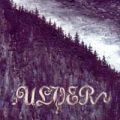| Windowpane |
|
21 Nov 2006 04:10 | Quote |
United States  Posts: 37
|
http://www.guitarstuff.com/lessons/majscale/majscale.html
That if learn these five patterns, I can use those 5 patterns for any scale just as long as I start on that certain note? Someone please just explain this a little. Can you only use the first position near the rear of the fret bored since is more like an open position? I'm lost. :D |
| llynix |
|
21 Nov 2006 05:08 | Quote |
United States  Posts: 22
|
Not for any scale. Just the major. Whatever note the root is is the scale. They show a G major and they start on the 3rd fret which is a G. If you were to move it up two frets you would have an A major.
I prefer to write all those patterns on one fretboard and just learn the whole thing, that way you can get in between them. But it's all the same.
This post has pretty much the same thing and is explained much better.
I've actually got a 'ditty' coming up on my website involving this.
Llynix - One man, one guitar, one website, one ditty a day. |
| llynix |
|
21 Nov 2006 05:09 | Quote |
United States  Posts: 22
|
ack.. that post is a movable chord lesson not a movable scale. Ohh well all the same almost :)
|
| Windowpane |
|
21 Nov 2006 11:37 | Quote |
United States  Posts: 37
|
Thanks alot. I really appriciate it. I'll be sure to check out the "One ditty..." often! :) |
| Moonlit |
|
22 Nov 2006 00:52 | Quote |
United States  Posts: 85
|
Yes, you can. Memorize those patterns well. Each of those patterns constitues a mode of the major scale(don't think about this too much yet.better to learn after you've got the patterns down). When you memorize them all well, something that will get better over years of playing, improvisation and playing in general will get easier and easier.
You can start certain patterns on what your root note is going to be, to play in different keys. The patterns are the same for all keys, all you need to do is shift them some. |
| Windowpane |
|
22 Nov 2006 02:11 | Quote |
United States  Posts: 37
|
So, say I play the first position ( which is closest to the headstock) alot closer up toward the front of the guitar. Will taht still work? Or can I only play the first position near the headstock? |
| llynix |
|
22 Nov 2006 02:32 | Quote |
United States  Posts: 22
|
|
| Windowpane |
|
22 Nov 2006 10:38 | Quote |
United States  Posts: 37
|
Not to beat a dead horse: So say I play the open position for say...D#. And start it on the 11th fret. If someone asked me what scale it was, I would just say "This is a D# major scale". Same goes for any of the 5 poistions for any note? |
| llynix |
|
22 Nov 2006 12:58 | Quote |
United States  Posts: 22
|
Usually when we say something is open it is at first position meaning it's at the 0-5 fret. It's all about playing the open strings.
If you were to play pattern one. With the root note (the one that's circled on that page) starting on the 11th fret you would indeed be playing a D#major. 12th fret would be Emajor, 10th Dmajor et cetra ad infinium. You should be able to play every major scale now.
Llynix - One man, one guitar, one website, one ditty a day. |
| Moonlit |
|
22 Nov 2006 17:07 | Quote |
United States  Posts: 85
|
I think you would be less confused if you memorize the names of the "patterns". Calling them open position can be confusing as llynix said. The position you are referring to is called the Ionian pattern. It is the same as the Major Scale. |
| paerdeveygh |
|
23 Nov 2006 05:36 | Quote |
Joined: way back Finland  Lessons: 1 Karma 
|
@Moonlit, you said: "Each of those patterns constitues a mode of the major scale" and "The position you are referring to is called the Ionian pattern". But all the 5 patterns/positions on the site: http://www.guitarstuff.com/lessons/majscale/majscale.html
are ionian/major patterns.
The Ionian/major scale can be played in 5 different possitions. To make it a different mode, you have to change the rootnote within the same possition, for example:
take position 1:
--1-[--2-[----[--4-[---- when your rootnote is a G, it would be a
----[--2-[----[--4-[---- G Ionian/major mode, but when (in the same
--1-[----[--3-[--4-[---- position) your rootnote is the note next
--1-[----[--3-[--4-[---- to it "A", it would be an A Dorian mode.
--1-[--2-[----[--4-[---- B - phrigian, C - Lydian etc.
----[--2-[----[--4-[----
I think you mean: shift the G major scale up on fret, and then you would get a G-Locrian scale, 3 frets: G- Aolian, 5 frets:G-Myxolydian, 7 frets: G-lydian, 8 frets: G Phrygian, 10 frets: G- Dorian, 12 frets: G-Ionian again,
|
| Windowpane |
|
23 Nov 2006 10:52 | Quote |
United States  Posts: 37
|
So each of the five poistions make the entire major scale of whatever note you start on, anywhere on the fret board?
-last question. :) |
| paerdeveygh |
|
23 Nov 2006 11:13 | Quote |
Joined: way back Finland  Lessons: 1 Karma 
|
:) Check the "full G major scale" here on this site, in the guitar scales section, you can recognise those five patterns next to each other, together they form a so called "grid", and by moving that grid one fret up, you change it into the G# major etc. |
| paerdeveygh |
|
23 Nov 2006 12:26 | Quote |
Joined: way back Finland  Lessons: 1 Karma 
|
And just keep on asking until you fully understand :) |
| Moonlit |
|
23 Nov 2006 17:02 | Quote |
United States  Posts: 85
|
That whole G Ionian pattern is also the pattern of A Dorian, B Phrygian etc...without shifting it at all. By the way, Ionian and Locrian share a pattern. Same with Phrygian and Lydian. |
| llynix |
|
24 Nov 2006 03:26 | Quote |
United States  Posts: 22
|
Sorry to thread hijack, but it's close to on topic.
Moonlit could you correct me if I'm wrong?
The major scale follows pattern wwhwwwh. Major is the same as Ionian.
Ionian - wwhwwwh
Dorian - whwwwhw
Phrygian - hwwwhww
Lydian - wwwhwwh
Mixolydian - wwhwwhw
Minor (?) - whwwhww
Locrian - hwwhwww
In each case it's the same pattern, just starting on a different note. And that's why a C major scale is the same as A minor.
So for every scale, there are 6 other equivalent scales with different root notes.
Also, what's the fancy name for minor?
Llynix - One man, one guitar, one website, one ditty a day.
|
| Moonlit |
|
24 Nov 2006 17:36 | Quote |
United States  Posts: 85
|
Position 1 is the Ionian pattern. It follows the Major Scale interval pattern. Pattern 2 is the Dorian pattern etc.. It follows the Dorian interval pattern. You start on A(on the low e string), and work your way up to the A on the high e string, using the same notes that the first pattern used. This is the concept of relative modes. Every scale has the same amount of modes(they technically are modes, not other scales) as it has notes. So every Major Scale has 7 modes. Some symmetrical scales have only 2 different patterns, although they have more notes than that. Aeolian mode is the same as Natural Minor.
For anyone who doesn't know, I'm going to list the modes off each scale degree.
1. Major
2. Dorian
3. Phrygian
4. Lydian
5. Mixolydian
6. Aeolian
7. Locrian
|
| paerdeveygh |
|
29 Nov 2006 12:20 | Quote |
Joined: way back Finland  Lessons: 1 Karma 
|
I see what you mean by "Position 1 is the Ionian pattern" and "Pattern 2 is the Dorian pattern etc.." ...but I think that statement is not entirely accurate, because, position 1 can at the same time also be all the other 6 modes, it just depends on what note is the root? |
| Moonlit |
|
29 Nov 2006 18:15 | Quote |
United States  Posts: 85
|
Yes, it can be any of them. It depends on what the tonic note is. Still, those patterns follow the intervallic pattern of each of the modes associated with them. |
|
|





